APRIL 2024


ASK THE EXPERT: BATTLING DEPRESSION RECIPES: STRAWBERRY GINGER BEET AND KIWI BANANA SPINACH SMOOTHIES
FEATURE:
MENTAL HEALTH MATTERS: UNDERSTANDING HEALTH ANXIETY
REVITALIZING THE MIND: THE POWER OF NEUROPLASTICITY FOR HEALTHY AGING
In the quest to age well, science has long been interested in how to slow the signs of aging or even reverse some of them altogether. What can be done to reverse the negative effects of aging? How can we promote overall health and pursue the highest possible quality of life throughout the lifespan? While the passage of time inevitably leaves its mark on the body and brain (many of those marks are positive and healthy), recent discoveries in neuroscience highlight a promising pathway to improved brain health: neuroplasticity. The brain’s remarkable ability to adapt, learn and reorganize throughout life offers hope for combatting the cognitive decline often associated with aging.
APRIL 2024 - 1
Publisher: Amy Natt AmyN@aosnc.com Editor-in-Chief: Amy Phariss Editor@outreachnc.com Creative Director: Sarah McElroy Coalfeather Art & Design Marketing & Ad Sales: Emma Campbell EmmaC@aosnc.com continued on page 4
OCTOBER
Well, it’s official: fall is here. I had my first pumpkin-spiced
ture dipped low enough to merit a fleece.
Don’t worry. It was decaf.
Spring feels fully arrived. The wisteria is dripping from every fence post and mailbox in town. The pollen clings to any surface possible, including our clothes, hair and skin. The sun is shining most days, and rain creeps in here and there to ensure all living things are hydrated, giving bloom to another season.
This month we explore the idea of growth within ourselves in our feature: Revitalizing the Mind: The Power of Neuroplasticity for Healthy Aging. How can we strengthen our brains and actually build new pathways as we age? We get into all things neuroplastic and the practical steps we can take on a daily basis to engage our brains and support new mental growth.
In Ask the Expert, Kate Pomplun tackles a difficult reader question about suicide among the elderly. Pomplun explores how to support ourselves and our loved ones who experience the same mental health issues present among people of all ages.
April 6 is National Library Day. Remember back when we had to search for books in the card catalogue and use microfilm? Those were the days. We look at some of



October is a gentle month. There are constant reminders of change. we are lucky, toward each other. We have lingering conversations over the flames flicker. Smoke dances around us in a circle. We zip our jackets
the facts and figures of libraries worldwide and here at home in the U.S., and we get up to date with the latest New York City Public Library’s most requested volumes from 2023.
In this month’s feature, we’re starting an important conversation: care community for ourselves or a loved one? Fox Hollow Senior Robin Hutchings offers inside perspective for making this decision.
In Ask the Expert, Amy Natt answers a reader’s question regarding away without any estate planning. Without a will or access to important
Finally, in April’s Mental Health Matters, Amy Phariss (that’s me) writes about health anxiety, a regular issue addressed in her mental health counseling practice. What is health anxiety? How does it show up? And what can we do to feel better in our bodies and about our bodies.
Physical therapist Dr. Sara Morrison of Total Body Therapy and Wellness potential diagnostic tools used in physical therapy to help diagnose these tools differ from what other doctor’s offices may offer.
As we keep calm and carry on, the words of writer Anne Lamott seem practical:
I’m going to agree with Nathaniel Hawthorne this month, who wrote:
I cannot endure to waste anything so precious as autumnal sunshine spent almost all the daylight hours in the open air.
Here’s to enjoying the October sunshine, falling leaves and daylight
Almost everything will work again if you unplug it for a few minutes, including you.
Indeed,




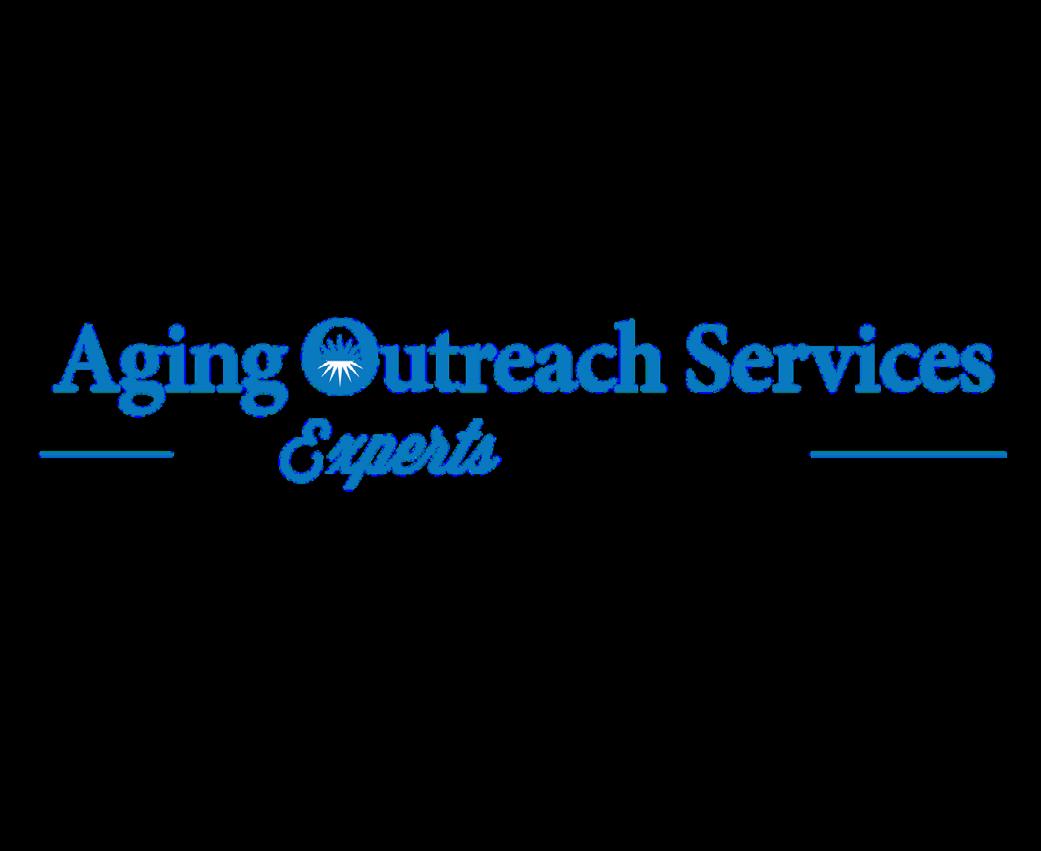


2022 - 2
latte just
Amy Phariss,
editor@outreachnc.com e in Aging Well Experts
9 1 0 . 6 9 2 . 0 6 8 3 | A O S N C . c o m SCHEDULE a consultation TODAY to RECEIVE a Life Planning Guide April 16 April 16 National Healthcare Decisions Day National Healthcare Decisions Day Y o u r d e c i s i o n s m a t t e r ! We can help you make positive, informed decisions! We encourage you to complete your advance directives and to share your wishes with your chosen representative BEFORE a crisis occurs! FOLLOW US! Keep up with all things ONC by following us on social media. @Aging Outreach Services @Aging Outreach Services @Aging Outreach Services
LETTER FROM THE EDITOR facebook.com/agingoutreach/ instagram.com/agingoutreachservices/
Editor-in-Chief , OutreachNC |
LETTER FROM THE EDITOR Amy Phariss, Editor-in-Chief, OutreachNC | editor@outreachnc.com
ASK THE EXPERT: BATTLING DEPRESSION
Kate Pomplun, LSMW, CMC | kate@agingcaresolutionsnc.com
Question: I just read that the highest suicide rate for any age is for adults 85+. This shocked me, and I’ve been spending more time visiting with my mother, who is now 92. I see signs of depression in my mom like avoiding socializing and sleeping all the time. I am scared that she may become more depressed, but I don’t know how to help. What should I be looking for, and how can I help my mom feel better not just physically but mentally, too?
Answer: Sadly, you are correct that the rate of suicide is higher in older adults and continues to be on the rise for people 65 and older.
There are a number of different factors contributing to this (which you can read more about on the National Council of Aging’s page Understanding and Preventing Suicide in Older Adults (ncoa.org) but a significant factor is increased loneliness and instances of depression. Please know that increased loneliness and instances of depression do not mean your mom will become suicidal, yet your concern about her physical and mental health is important.
Symptoms of depression take on different forms for different people but can include those that you mentioned such as sleeping more, lack of motivation or desire to be social or engage in activities a person previously enjoyed. Other indicators can include eating more or less than usual, feelings of hopelessness, guilt, emptiness, irritability. Many of these are linked to physical health as well as circumstances in an older adult’s life.
Let’s look at a few factors that could be related to these symptoms in your mom’s case.
• Is she avoiding social gatherings because she’s become more forgetful and feels embarrassed if she cannot keep up with the flow of conversation as she used to?
• Does she have physical limitations now like using a walker or hearing difficulties that may also make her feel embarrassed or not able to keep up?
• Has she lost close friends due to death, moving or their physical or mental health? Is it a matter of transportation if she’s no longer driving?
Some older adults who become widows or widowers find their social circles change if they were used to doing things with couples. This plus the grieving process can also contribute to depression, loneliness and isolation.
Professional evaluations and diagnosis are always important but can be a difficult topic to bring up, especially with certain generational cohorts for whom mental health concerns carry much stigma.
Having a discussion with your mom about your concerns is the first step. Mention that you’ve noticed the changes in socialization and sleep and ask about possible causes like those mentioned above. Maybe you can share some of the signs and symptoms with her and suggest you talk together with her primary care physician to start. Exercise can be a factor to help if done safely. Ask if there are ways to help her engage more socially, or sleep better so she doesn’t need to sleep as much in the daytime. If she is experiencing grief/depression, her doctor can help make a referral to a psychiatrist who can evaluate further. Chances are she’s undergoing a lot of changes physically, socially and mentally. She may benefit from a counselor to speak with about these and the impacts on her life.
She’s fortunate to have you and visiting with her when you’re able will make a difference. Maybe you can help her reconnect with friends or introduce her to some new ones. There may be a community center nearby with others looking to connect – some even provide transportation and congregate meals. Perhaps you can check one out together. The key is to keep the lines of communication open and let your mom know you’re there, listening and available if she needs any help.
APRIL 2024 - 3
Revitalizing the Mind:
THE POWER OF NEUROPLASTICITY FOR HEALTHY AGING
by Amy Phariss
What is Neuroplasticity?
According to researchers, neuroplasticity (a.k.a. neural plasticity or brain plasticity) is “a process that involves adaptive structural and functional changes to the brain.”
More simply, neuroplasticity is the brain’s way of rewiring itself. Previously, we thought the brain’s structure and function was fixed at a certain age. The belief was that at some point, we’d learned all we could learn and were no longer able to make new brain connections or neural pathways. However, new research in neuroscience has proven this to be untrue.
The brain continues learning, developing, rewiring and changing throughout the lifespan.
Our brains remain remarkably adaptable and flexible throughout our lives.
How does neuroplasticity affect the aging process?
As we age, changes in neuroplasticity can significantly affect our cognitive abilities and brain function. Our brains can develop, adapt, grow and strengthen as we age. Imagine your brain is like a city. There are lots of roads connecting different areas. Neuroplasticity is like the city’s ability to change its roads or create new ones based on traffic patterns and construction needs. If more people move into the city, you’ll need wider roads, and you’ll need to connect old roads to new parts of town. The brain is like this city. The more information you learn and the more you use the brain’s neural networks and pathways, the more it grows and gets stronger. As it grows, you need more roads, and the roads need to go to new areas.
Imagine if you didn’t do anything to a city’s roads or infrastructure. Imagine people stopped driving on the roads and moved out of town. The roads begin to crack and wear down without use and repair.
Our brains work in a similar way.
4 - APRIL 2024
The term ‘use it or lose it’ applies to the brain as much as any other muscle, and using it in new, interesting, engaging ways turns out to be especially good for our brains and our overall health.
As we age, neuroplasticity slows down, but it doesn’t stop. It might take more effort and time to build new paths or repair older roads, but those roads still exist and can be built. New connections can be made, and our brains adapt to new information no matter how old we get. We are constantly learning, growing and changing.
What are some practical, everyday tips for increasing neuroplasticity for brain health and vitality?
Understanding the brain’s ability to change and adapt is one thing, but what can we do in our daily lives to encourage neuroplasticity? It turns out, much of what we already do is already hard at work strengthening our neurons and building new pathways.
Some of the best ways to encourage neuroplasticity include:
Keep Learning – from picking up pickle ball to learning another language, keeping the brain learning and engaged is one of the best ways to encourage growth and repair. In fact, according to Columbine Health System’s Center for Aging at Colorado State University, “It has been found that bilingualism can improve executive functioning (planning, control, focus, decision making), memory and cognitive flexibility….It’s never too late to learn something new, and learning a second language can lead to cognitive benefits and healthy aging.”
Learning a language or sport aren’t the only options. You can take up ballet, learn an instrument, take cooking classes, learn to garden, start playing mahjong or read about a subject you’ve always wanted to explore.
Seek Socialization – socializing is good for just about every part of our body. It keeps us mentally, emotionally and physically fit. According to Harvard Health, “Socializing can stimulate attention and memory, and help to strengthen neural networks. You may just be laughing and talking, but your brain is hard at work.” Scientists have found that people with strong social ties experience less cognitive decline
than people who spend much of their time isolated or alone. In fact, one study showed that when people are lonely, the risk of dementia increases by 40%. That’s a huge increase! Socializing might be seen as “optional” for many of us with work demands, family commitments and the general upkeep of life (mowing the grass and cooking meals), but socializing is as important to our health as the food we eat and the ways we move our bodies.
Eat and Drink for Brain Health – Key nutrients are important for overall body health and especially for brain health and neuroplasticity.
1. Foods low in inflammation – healthy fats (olive oil, salmon, avocado), unprocessed (whole, natural foods) and lean meats (chicken, turkey and fish). High inflammation foods should be avoided which include foods that are highly processed, high in sugar and high in unhealthy fats.
2. Antioxidants – foods high in antioxidants are great for lowering inflammation and reducing oxidative stress. Fruits and vegetables are great options. Berries are especially high in antioxidants. Nuts are also a great choice, and oatmeal is another food high on the antioxidant list. Tea, coffee and juice are also great options to pack in antioxidants. And we’d be remiss if we didn’t mention red wine and beer, both of which contain antioxidants. Remember to eat the rainbow (of whole, unprocessed foods) most of the time, and you’ll be giving your brain the best chance to grow and adapt as you age.
3. Water – dehydration affects the brain and the brain’s ability to grow, develop and stay healthy. The brain affects mood and cognitive function, and water accounts for 75% of brain mass. According to
APRIL 2024 - 5
RELAXATION POSE
At the end of a yoga practice, a few minutes are often dedicated to “savasana,” or deep relaxation, which is meant to calm the mind and relax the body. “After this pose, remain still and receptive for restoration and healing,” says Sri Dharma. “It’s also a meditative pose, especially for older people.”
HOW TO DO IT:
Lay on your back with your palms facing up along the sides of your body or facing down while resting on your torso.
Extend your legs straight
Take three deep, slow breaths. Relax your body, starting with your feet and moving up your body to your hands, arms, back, abdomen, chest, neck and head. If you have the time, remain in this pose for 10 to 30 minutes.
To release, bring slight movement into your hands and feet, allowing your breath to deepen. Eventually, take a full-body stretch with your arms and legs extended. Roll over to one side and slowly move to a seated position.
MODIFICATIONS:
Use blankets, pillows, bolsters, or blocks to ensure comfort in this position. Using a pillow under the head and the knees might make laying flat more accessible.
Sit in a chair, especially if you have mobility issues or are unable to lie on the floor for any reason.
Keep your knees bent, especially for those with low back pain, decreased mobility, or if laying flat doesn’t feel comfortable.
Source: https://www.forbes.com/health/ healthy-aging/best-yoga-poses-for-older-adults/
some studies, you only need a 1% amount of dehydration to create a 5% decline in cognitive function. WebMD lists the following health issues related to dehydration: problems with memory, poor concentration, slow reaction times, feeling tired/lethargic and disorientation.
Drinking enough water throughout the day (roughly 56 ounces for older adults) is important for supporting brain health and plasticity.
Stay Active – When we think of exercise, we typically think of keeping ourselves slim and physically fit, but physical activity is also a major player in brain health. According to research (2020), physical exercise (PE) “was able to promote neuroplasticity through increasing cell signaling and high neuronal growth and differentiation….In humans, neuroplasticity was observed by increasing the white and gray matter in various brain areas after different PE protocols. Additionally, PE also promoted improvements in cognitive function, such as learning and memory” (Santos de Sousa Fernandes, et al.).
The best exercises for anyone are the exercises we stick with, enjoy and can safely engage in. This might mean yoga (also great for learning, breathing and socializing), pickle ball (we can’t say enough great things about this popular sport), swimming, walking, biking or any other form of exercise to get you up and moving.
As we reflect on the list of tips for keeping our brains healthy and plastic, it’s a familiar list. The key takeaway seems to be: be engaged, socially,
6 - APRIL 2024
mentally and physically. Our brains and bodies continue to develop and grow as we age. We often get the message that it’s all downhill after 50, but that’s simply untrue. We can build muscle at any age, and the brain may just be the most powerful muscle we have!
References:
Bilodeau, K. (2021, September 8). 3 ways to build brainboosting social connections. Harvard Health. https://www. health.harvard.edu/blog/3-ways-to-build-brain-boostingsocial-connections-202109082585
Hobbs, A. (2022, March 28). Exercising an aging brain. Colorado State University. https://www.research.colostate. edu/healthyagingcenter/2022/03/28/exercising-an-aging-




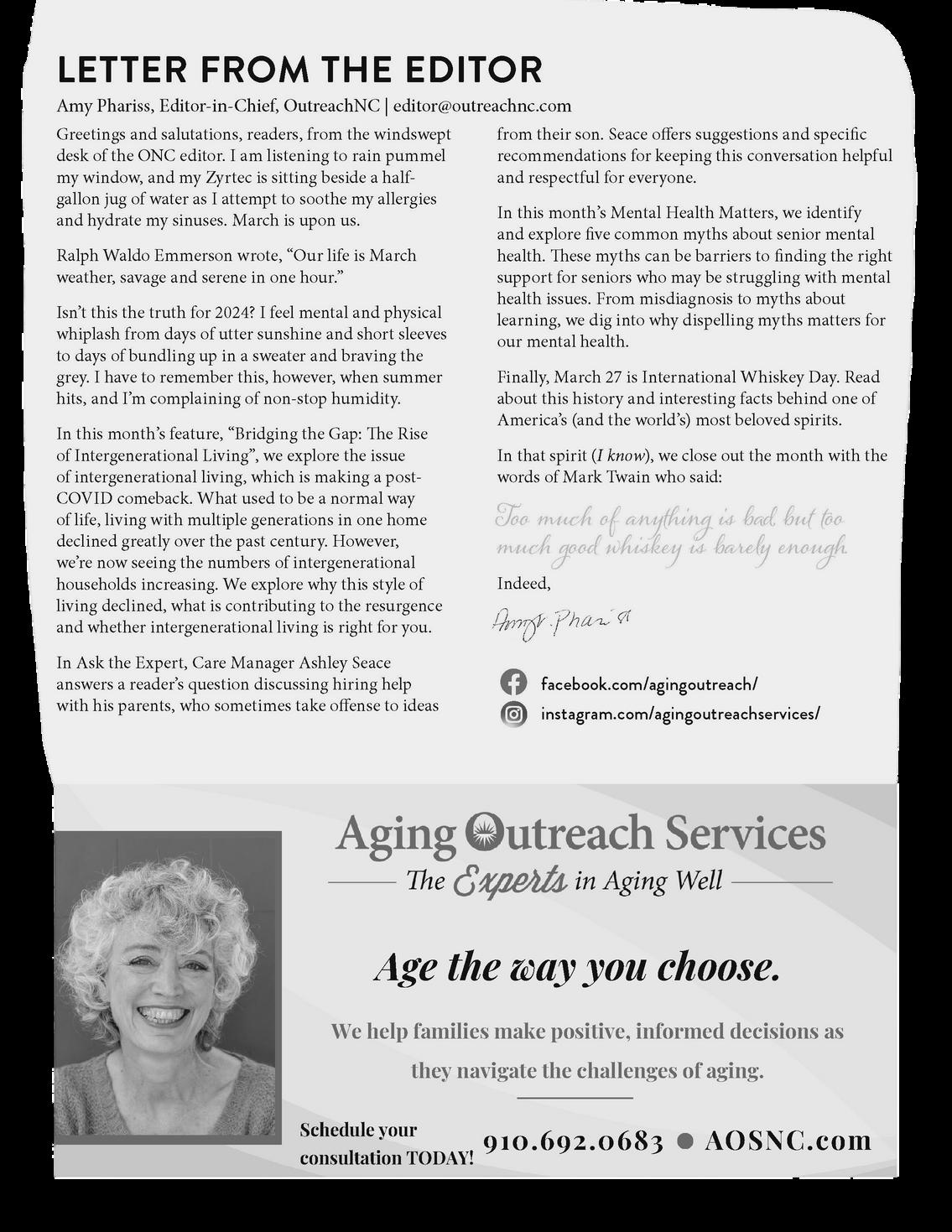

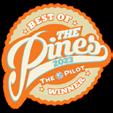

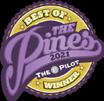

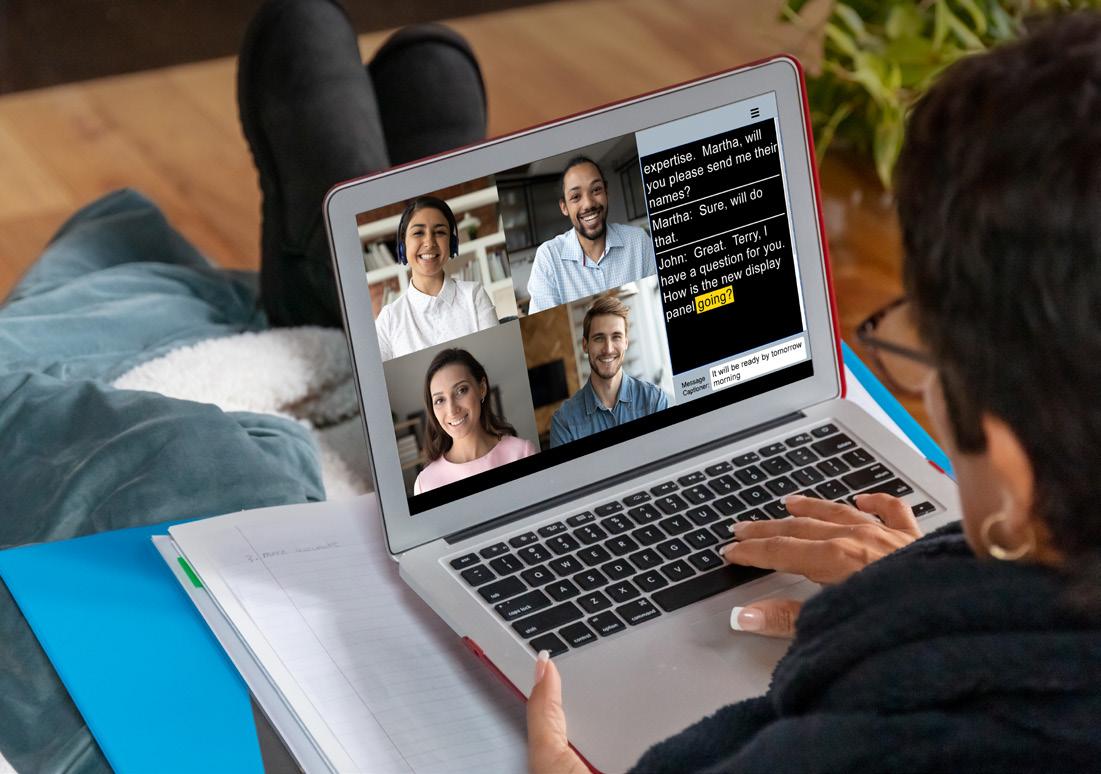
APRIL 2024 - 7
kim.m.calabretta@t-mobile.com relaync.com/rcc Communication with Captions! Relay Conference Captioning private-duty caregivers who will
cording to your eds & schedule.
Relay Conference Captioning (RCC) service is available for individuals who have a hearing loss or a speech disability to actively participate in teleconference calls or webinars by reading live captions on their laptop, mobile device or tablet.
work
W e v a l u e y o u r f e e d b a c k ! W e v a l u e y o u r f e e d b a c k ! Digital and Print Readers, Digital and Print Readers, T T ake our survey and ake our survey and share what’s important share what’s important to you as you navigate to you as you navigate your second 50. your second 50. T a k e o u r s u r v e y T O D A Y ! V i s i t o u r F a c e b o o k p a g e o r c l i c k H E R E
MENTAL HEALTH MATTERS: UNDERSTANDING HEALTH ANXIETY
Amy Phariss, LCMHCA, Clarity Counseling, NC | amy@claritycounselingnc.com
As a therapist, I work with clients who come to counseling with many different issues. From general anxiety, to family estrangement, to chronic pain, most of us will deal with something that keeps us up at night, saps our energy or leaves us feeling blue. When these symptoms go on for longer than we expected or when we can’t seem to get out of a funk, counseling can help. Just speaking freely and confidentially with a professional can be a huge relief and allow us to view our issues from a different perspective. One common issue I see in therapy is anxiety related to physical health.
Many clients have never heard the term “health anxiety” before they come for therapy. What exactly is health anxiety? There are two types of health anxiety based on a professional diagnosis: Somatic Symptom Disorder and Illness Anxiety Disorder (formerly known as hypochondria).
Somatic Symptom Disorder (SSD): according to the DSM-5, Somatic Symptom Disorder involves one or more physical symptoms accompanied by an excessive amount of energy, time, focus, emotion and behavior related to the symptom. This results in significant distress or dysfunction. The physical symptom may or may not be diagnosed by a doctor and may or may not be a result of a medical condition. Roughly 5% - 7% of the population experiences SDD, with women experiencing SDD at a 10:1 ratio to men. For a diagnosis of SDD, symptoms must affect daily life, must have been present for 6 or more months and the thoughts/feelings/behaviors must be persistent, excessive, and take up large amounts of time and energy.
Illness Anxiety Disorder (IAD): defined by excessive worry about having or developing a serious, undiagnosed medical condition. According to researchers (2023), “People with IAD experience persistent anxiety or fear of developing or having a serious medical illness that adversely affects their daily life” (French & Hameed). The prevalence of IAD in the population is roughly .75% in the general population and .1% in adolescence, and it has no gender preference. Symptoms include persistent anxiety and fear related to developing or having a significant health issue, often without symptoms. If somatic symptoms are present, they’re usually mild, but the anxiety and fear are excessive nonetheless.
In my clinical practice, many of my clients experience health anxiety that may not meet the criteria for an official diagnosis (it may not have lasted for six months, for example), but the anxiety and fear they have regarding their health and well-being is still very real.
It affects their mood, relationships and overall quality of life. Clients report a cycle of thoughts, behaviors and feelings that loop throughout much of their day. A client may have chronic migraines, for example. Upon waking, he might wonder: is my head going to ache today? If it does, will I be able to visit my grandkids? Do I have my medication in case I get a migraine? If I don’t, and I leave the house, will I be stuck with no relief? Maybe I should just stay home and cancel today’s outing. But my grandson will be disappointed. He’ll think I don’t care. I can’t even play with my grandson anymore. I’m a failure.
While this might seem like an extreme series of thoughts, many of my clients report having these type of thought loops often, many daily.
Or, if a client has chronic pain, they worry about being grumpy around loved ones or not being able to keep up with everyone else. To avoid being a drain on their families, they often stay in their rooms or homes, avoiding outings and declining invitations. This behavior leads to isolation, feelings of frustration, guilt and shame and more avoidance. The feedback loop is strong and often includes fear of increased pain or a recurrence of the injury or illness that started the pain.
For most of my clients, the anxiety began with an injury or health issue that was unexpected or traumatic.
For example, a client may fall, break a hip or leg and spend several weeks or months in rehabilitation after surgery. Even after the physical healing is complete, there is emotional healing left untreated, and this may come up as anxiety about their health.
Will I fall again?
Will my cancer come back?
Will I be strong enough to fight off an infection?
Is my migraine a tumor?
8 - APRIL 2024
For clients who have survived cancer, for example, any ache or pain in the area the cancer was present can cause anxiety. Is the cancer back? Am I sick again? Did the doctors get all of the cancer the first time? Has it spread?
One client told me she had an anxiety attack outside the cancer center just before her first check-up after full remission from cancer. She was so afraid the doctor would find more cancer or deliver bad news that her heart began to race, her hands got hot and throbbed, and she had to sit down and breathe deeply for several minutes before attempting to go into the building.
The body’s response to our emotional thoughts and feelings is strong.
Our fears and worries often come out or are expressed physically, from shaking hands to headaches to digestive issues.
The body and mind are truly connected. One is not affected without the other being affected, too. The symbiotic relationship between mind body can be both positive and negative. When we exercise, get sunshine, sleep well and feed our bodies healthy food, our brains and minds thrive as well. When we worry, live with shame, feel guilty and experience hopelessness, our bodies feel it, too. We have less energy. Our hearts race right along with our minds. We become lethargic. Our appetite is affected. We don’t sleep well, or we sleep too much.
Another factor in developing health anxiety is watching a loved one struggle with a health issue such as cancer, chronic illness (like Lupus or fibromyalgia) or having an injury that requires surgery or rehabilitation.
It can be hard for loved ones to support a partner or parents without also wondering: could this happen to me? Do I have these symptoms? Is this genetic?
Also, anxiety in one area can lead to increased anxiety in other areas of life. If you’re worried about financial issues, that worry and fear can bleed into fear about your health or the health of a loved one. If you’re anxious about your son who is deployed, you might notice yourself having more headaches, dealing with an upset stomach or having flare ups of chronic conditions such as IBS. Here again, there is a feedback loop of anxiety feeding more anxiety, affecting thoughts, feelings and behaviors.
Several therapeutic options are available to help with anxiety of all types, health anxiety included. Cognitive Behavioral Therapy (CBT) can be quite helpful. You will work with a counselor to identify your thoughts and
explore behaviors linked to these thoughts. The thought might be, for example, “I am going to be in pain today.” The behavior following this thought might be to cancel an appointment or get back into bed. A counselor can help you reframe negative thoughts and cognitions and explore whether they’re true all the time or some of the time, or if they’re true at all. For example, you might change “I am going to be in pain today” to “I might feel some pain today.” The shift in thinking allows you to leave the door open for not feeling pain or for going through most of the day without pain.
Another helpful tool for working with health anxiety is Eye Movement Desensitization Reprocessing (EMDR), which can be quite helpful for processing a traumatic event (such as a car accident, an unexpected diagnosis or an injury). It can also help process underlying feelings of guilt, grief, shame or anger related to your illness or pain. EMDR can help you understand and process events from the past that may be actually increasing your pain or causing more pain (such as childhood trauma). Sometimes, the best thing to help pain and anxiety is understanding where it comes from and why it’s happening. That alone can be therapeutic.
If you feel like your anxiety is getting worse or is more than you can manage alone, reach out to a loved one, a professional counselor or clergy or your primary care doctor. There are many options for feeling better both physically and emotionally. Suffering in silence isn’t the only option. From talk therapy to mindfulness-based therapy to support groups, there are many resources available to slow down or stop the feedback loop of anxiety related to your health and wellbeing.
APRIL 2024 - 9
April 6th is National Library Day. Many of us grew up in libraries, sitting crisscross-applesauce on the library floor as the librarian read to us from picture books and, if we were lucky, eventually chapter books. We meandered through the shelves, picked out books, sorted through card catalogues and can still hear the click of the date stamp as the librarian punched the numbers of when the book was due. Libraries, for our growing minds, were hushed, hallowed places where we could go on adventures, get lost in other worlds and learn about places, people and things that didn’t exist in our neighborhoods or homes.
In the past 20 years, libraries have evolved to meet the ever-expanding needs of today’s patrons. More than offering books, they provide everything from digital media (books, music, articles and more) to resume building services to health and wellness programs. Children’s reading programs abound. Some libraries host language learning workshops or even computer coding classes. The reach of our libraries changes along with our needs, and libraries remain an integral part of community culture.
Here are some facts about libraries here in the U.S. and worldwide:
According to the International Federation of Library Associations and Institutions, there are around 2.8 million libraries worldwide.
There are an estimated 123,627 libraries of all kinds in the United States today.
The Library of Congress is the world’s largest library. It houses more than 173 million items.
Librarians used to have to adopt a certain style of handwriting known as “library hand.” The handwriting was clear and legible, which was helpful for card catalogues. The practice declined with the use of typewriters.
As of 2022, there were nearly 165,000 librarians, over 38,000 library technicians and almost 80,000 library assistants working in the United States alone.
The oldest library dates back to 7 BC and was created by the King Assyria.
10 - APRIL 2024
The number of libraries worldwide with full-time staff is 1.6 million.
College libraries receive fewer than three cents of every dollar spent on higher education
China has the largest number of public libraries. Russia is second, and India is third.
The New York Public Library loans more than books. Patrons can check out a necktie or briefcase to complete an outfit for a job interview.
According to a Philadelphia survey, homes located within a quarter mile of a library are worth $8,630 more than a home located more than a quarter mile away from a library.
A Yale University library used to loan a therapy dog. General Montgomery, a.k.a. Monty, was a border terrier mix and certified therapy dog, but Monty has since passed away.
Many libraries charge patrons late fees for returning books past their due date, but not all libraries do this. In New York City, for example, the public library system announced in 2021 that it would be eliminating all late fees. Interestingly, the number of visitors increased and thousands of overdue books and lost items were returned.
Texas is home to an enormous Walmartturned-library in McAllen, TX. It includes a computer lab, a café and a 180seat auditorium.
There is a library of smells in Versailles, France. It is a repository for perfumes and houses over 3,200 scents, 400 of which are no longer made.
Americans check out an average of eight books a year. They spend $36.96 a year for the public library – about the average cost of one hardcover book.
Andrew Carnegie funded many libraries. He donated over $55 million (about $1.6 billion in today’s dollars) between 1886 and 1919 to 2509 libraries worldwide, 1679 of which are in the United States.
The most overdue book was 122 years late. In 2011 the Camden School of arts lending library had a book returned. It was Charles Darwin’s Insectivorous Plants and was originally checked out in 1889.
New York Public Library announces the Top 10 books checked out each year. Here are the top 10 books for 2023:
APRIL 2024 - 11
1. Lessons in Chemistry – Garmus 2. Tomorrow, and Tomorrow, and Tomorrow – Zevin 3. Spare – Prince Harry 4. Book Lovers – Henry 5. Verity – Hoover 6. Yellowface – Kuang 7. The Heaven and Earth Grocery Store – McBride 8. The Seven Husbands of Evelyn Hugo – Reid 9. It Ends with Us – Hoover 10. Daisy Jones and the Six – Reid
Strawberry Ginger Beet Smoothie
Ingredients for 2 servings
• 1 cup strawberry
• 1 ½ cups romaine lettuce
• ½ red beet, peeled, diced
• 1 piece ginger, 1-inch (2 1/2 cm), peeled
• 1 ½ cups ice
Preparation
1. Place the strawberries, lettuce, beet, and ginger in a blender or food processor and blend until just combined.
2. Add in the ice and continue to blend until the mixture is smooth.
3. Enjoy!
Ingredients for 2 servings
• 3 kiwis, cubed, frozen
• 1 banana, sliced, frozen
• 2 cups spinach
• 1 cup milk, of choice
• 1 cup plain greek yogurt
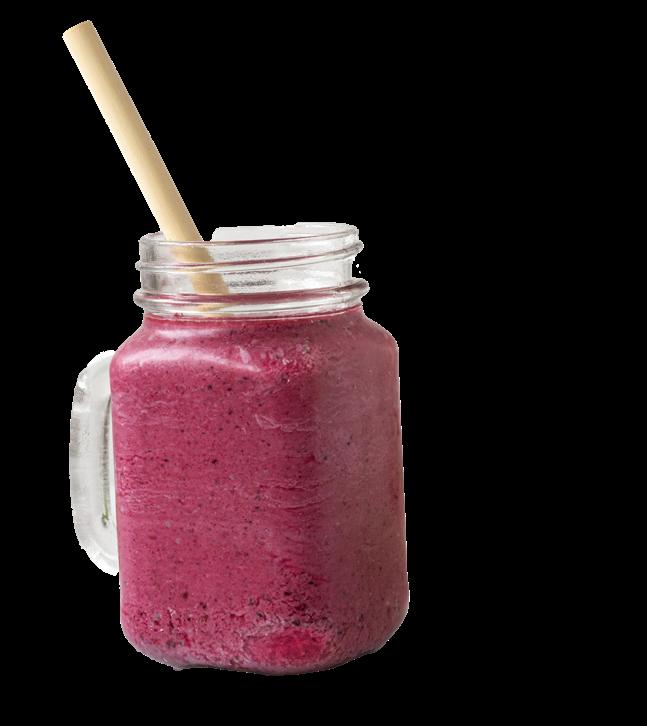
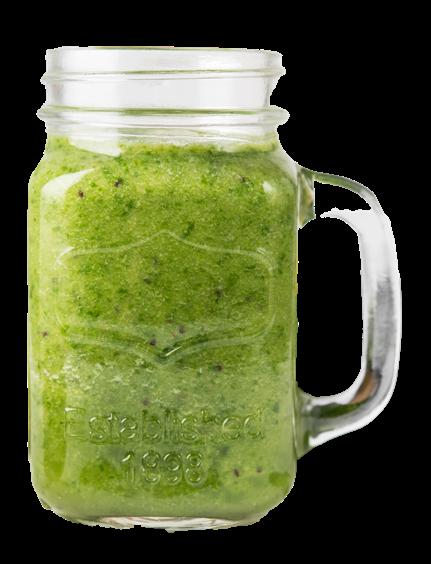
Preparation
1. When ready to use, put milk and spinach into the blender first. Blend until the spinach is fully incorporated into the milk.
2. Then add Greek yogurt and frozen fruit and mix until consistency is smooth.
3. Enjoy!
At TerraBella Southern Pines, thoughtfully designed interiors and amenity spaces, tasty homestyle dining, and exceptional lifestyle programs come together to create Southern Pines’ best option for Assisted Living & Memory Care. Plus, with 24-hour support from our experienced team of professional caretakers, you or your loved one can enjoy peace of mind knowing we’re here for you every step of the way!
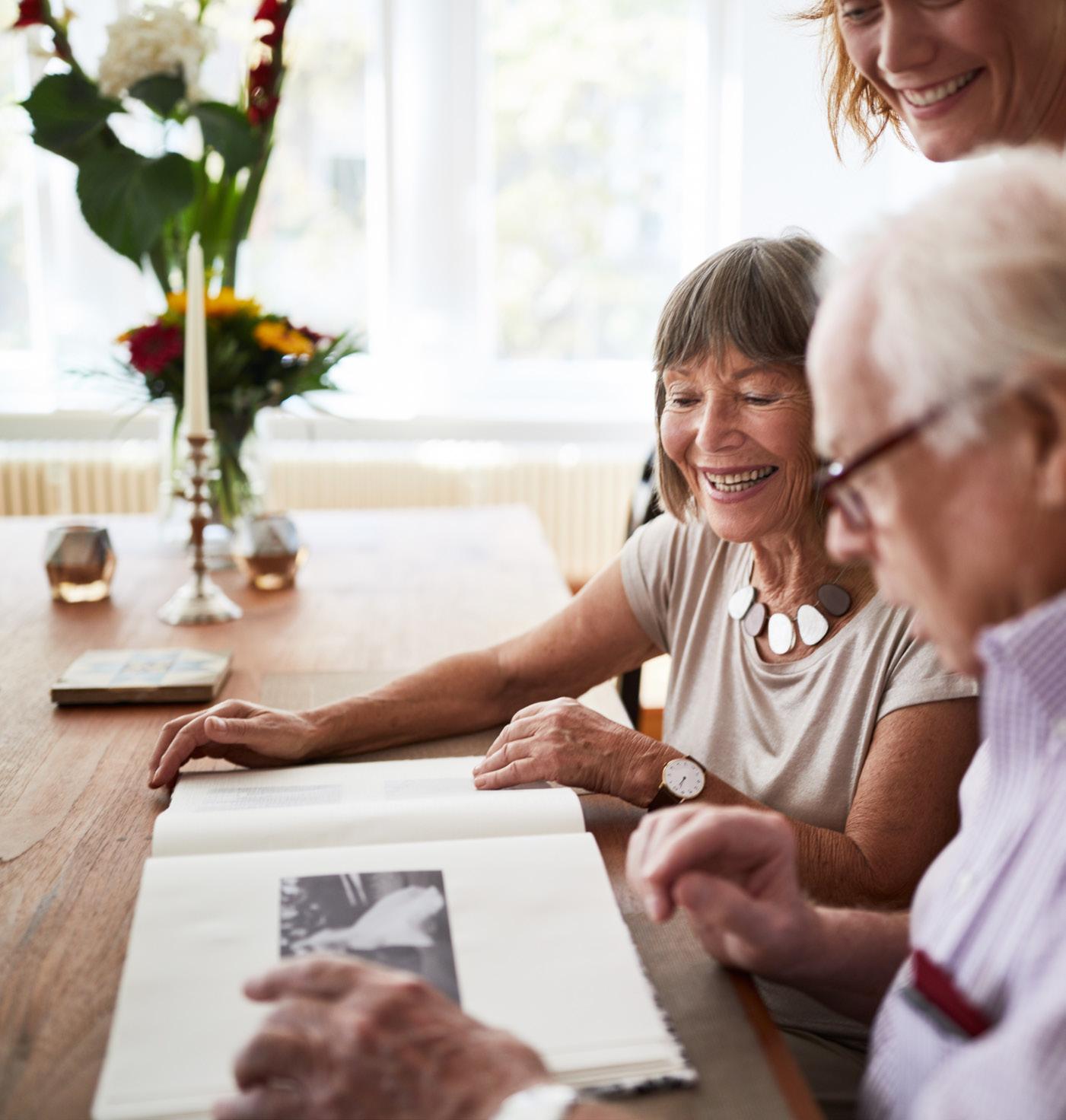
12 - APRIL 2024
Kiwi BananaSmoothieSpinach
ASSISTED LIVING and MEMORY CARE Exceptional
Come See What Makes Us Different Recently Renovated Homestyle Dining with Tableside Service Tenured Team Members 910.216.4537 TerraBellaSouthernPines.com 101 Brucewood Road, Southern Pines, NC 28387 Assisted Living I Memory Care ©2023 TerraBella Senior Living. All Rights Reserved. Prices, plans and programs are subject to change or withdrawal without notice. Void where prohibited by law. Managed and Operated by TerraBella Senior Living. TBSP-0024 7/23
ACROSS
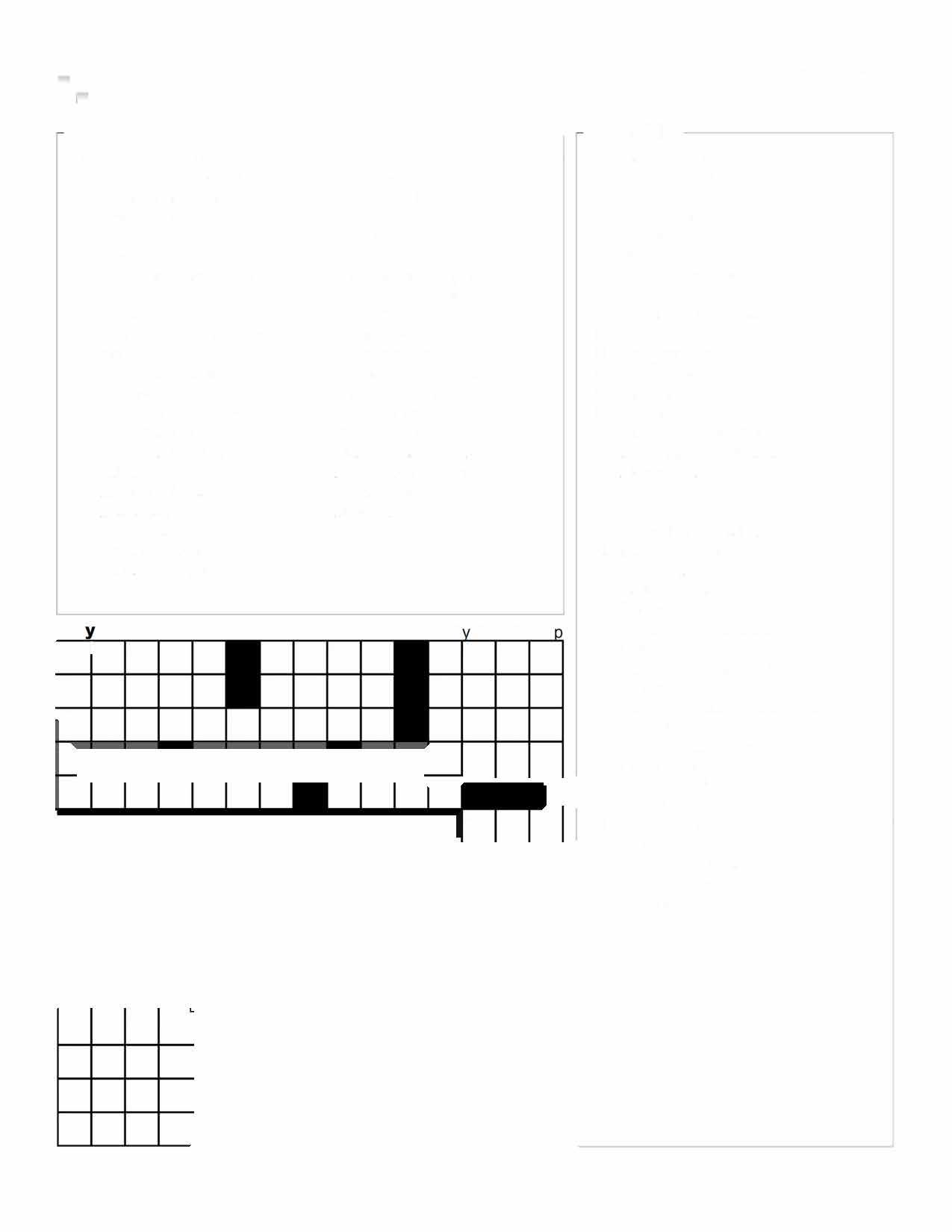

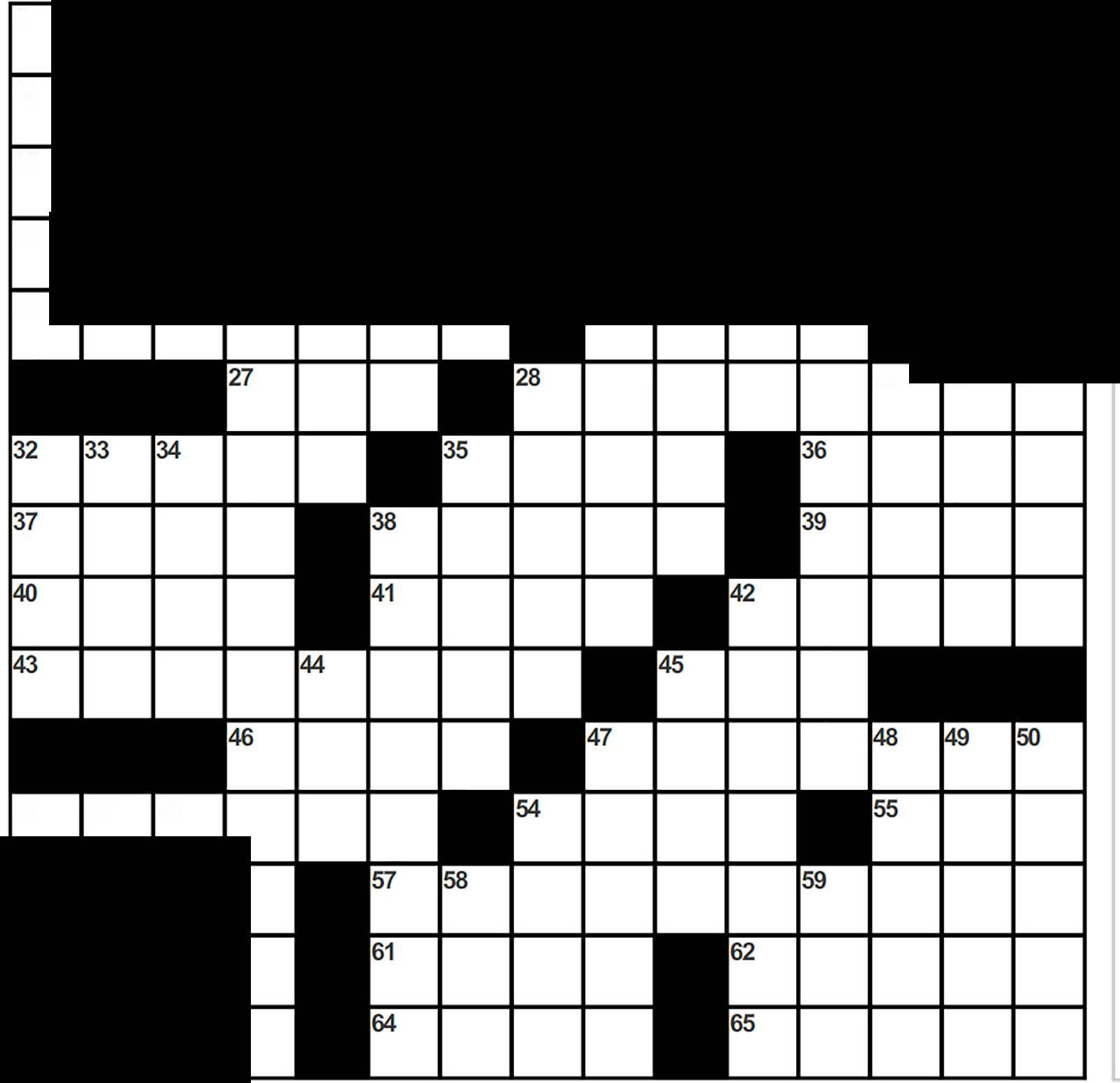
I) Touch base after a flyout 6) Bronx Zoo houseful 10) Fissionable particle 14) Jumped up 15) Grid great Starr 16) Dumbbell 17) Mr. Moto portrayer, 193557 19) Ice and Iron, for two 20) "Time_ Bottle" (Croce tune) 21) Spelunker's milieu 22) Big name in inns 24) Nine-to-fiver's grind 26) Plays for a sap 2 7) Soccer fan's cheer 28) "Hold it!" 32) Hacienda brick 35) Poker holding 36) California wine valley 37) Smoke an e-cig 38) Chicken coop raiders 39) Sink problem 40) In excess of 41) Was in the hole 42) Part of a pie 43) Totally lost it 45) _ Jeanne d'Arc 46) The Flintstones' pet 47) Outdoor dining spot 51) Duelist's aide 54) Comics possum 55) Gangster's gun 56) Arabian Peninsula land 57) Mr. Freeze portrayer, 1967 60) 15th-century caravel 61) "Dirty" Cajun dish 62) Slender and graceful 63) Baseball card tidbit 64) Work out in the ring 65) Head of cattle DOWN I) Floppy-snouted beast 2) Sphere of action 3) Subtly suggested 4) Make a patsy of 5) Bed sheet fabric 6) Higher in rank 7) Trim, as expenses 8) Go astray 9) Illegal muscle enhancers 10) Mr. Deeds portrayer, 2002 11) Frat party garb 12) Pundit's piece 13) Flat-topped formation 18) Valentine trim 23) Tidbit for an aardvark 25) Mr. Chips portrayer, 1939 26) Flogged, in a way 28) Does a car wash job 29) Agra garb 10) Fissionable particle 14) Jumped up 15) Grid great Starr 16) Dumbbell 17) Mr. Moto portrayer, 193557 19) Ice and Iron, for two 20) "Time_ Bottle" (Croce tune) 21) Spelunker's milieu 22) Big name in inns 24) Nine-to-fiver's grind 26) Plays for a sap 27) Soccer fan's cheer 28) "Hold it!" 32) Hacienda brick 35) Poker holding 36) California wine valley 37) Smoke an e-cig 38) Chicken coop raiders He , Mister! 1 2 3 14 17 20 24 51 52 53 56 60 63 4 5 6 15 18 7 41)Was in the hole 42) Part of a pie 43) Totally lost it 45) _ Jeanne d'Arc 46) The Flintstones' pet 47) Outdoor dining spot 51) Duelist's aide 54) Comics possum 55) Gangster's gun 56) Arabian Peninsula land 57) Mr. Freeze portrayer, 1967 60) 15th-century caravel 61) "Dirty" Cajun dish 62) Slender and graceful 63) Baseball card tidbit 64) Work out in the ring 65) Head of cattle B Fred Pisco 8 9 10 11 12 13 16 19 29 30 31 3) Subtly 4) Make 5) Bed 6) Higher 7) Trim, 8) Go 9) Illegal 10) Mr. 11) Frat 12) Pundit's 13) Flat-topped 18) Valentine 23) Tidbit 25) Mr. 26) Flogged, 28) Does 29) Agra 30) Cast-of-thousands 3 l) Matador's 32) Declare 33) Brubeck 34) Tourney 35) Bookstore 38) Original 42) Enjoys 44) Diarist 45) Game mascot 47) Cell 48) Marble 49) Private 50) Anesthetic 51) Peyton 52) Send 53) Water-to-wine 54) Twelve-point 58) Backtalk 59) More
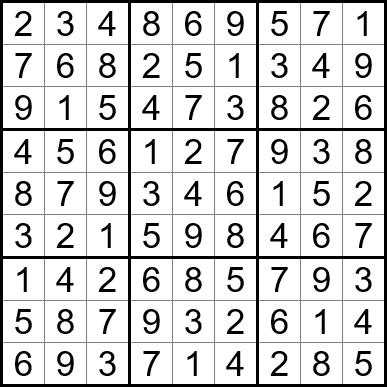
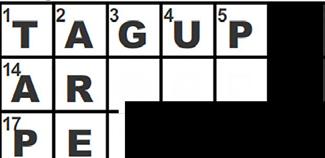

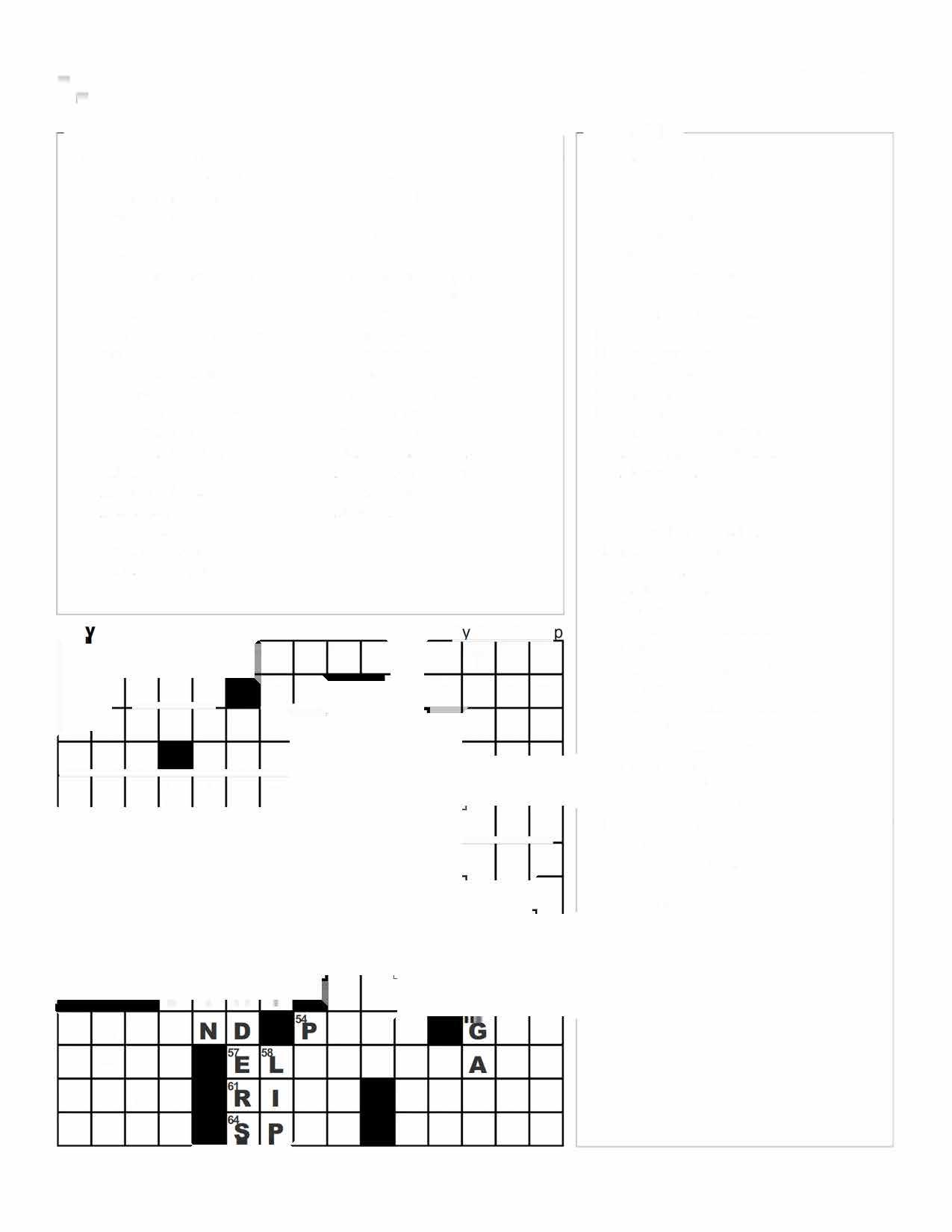

On any given day, you’ll find a range of options to fuel your passions, meet new friends and enjoy a lifestyle rich with interesting and exciting educational and engaging programs. Learn more about senior living at QuailHavenVillage.com or schedule a visit at 910.537.6812 INDEPENDENT LIVING | ASSISTED LIVING SKILLED NURSING | REHABILITATION
Gray Matter Games Solutions 57 19) Ice and Iron, for two 20) "Time_ Bottle" (Croce tune) 21) Spelunker's milieu 22) Big name in inns 24) Nine-to-fiver's grind 26) Plays for a sap 27) Soccer fan's cheer 28) "Hold it!" 32) Hacienda brick 35) Poker holding 36) California wine valley 37) Smoke an e-cig 38) Chicken coop raiders He , Mister! 47) Outdoor dining spot 51) Duelist's aide 54) Comics possum 55) Gangster's gun 56) Arabian Peninsula land 57) Mr. Freeze portrayer, 1967 60) 15th-century caravel 61) "Dirty" Cajun dish 62) Slender and graceful 63) Baseball card tidbit 64) Work out in the ring 65) Head of cattle B Fred Pisco A 7P E 9s 1A 1T 1b 1ivl 0 S E 1 8 A ------TE R 1 L 0 20 1 N A 2C A V 2k A T2R ACE 55 SE 53c 0 5b M A N � I N A 1; TA T --+-----,t--4� E OG IWA CE A R 1b O p E G E S TA 2s 3\: 3C A PA p 0 A T L sl C H Gl I T H E Gs TE E R 8) Go astray 9) Illegal muscle enhancers 10) Mr. Deeds portrayer, 11) Frat party garb 12) Pundit's piece 13) Flat-topped formation 18) Valentine trim 23) Tidbit for an aardvark 25) Mr. Chips portrayer, 26) Flogged, in a way 28) Does a car wash job 29) Agra garb 30) Cast-of-thousands 3 l) Matador's prop 32) Declare finnly 33) Brubeck ofjazz 34) Tourney for all 35) Bookstore section 38) Original members 42) Enjoys the boardwalk 44) Diarist Anais 45) Game company with mascot 47) Cell company's structure 48) Marble material 49) Private stock 50) Anesthetic of old 51) Peyton and Eli, to 52) Send out 53) Water-to-wine site 54) Twelve-point type 58) Backtalk 59) More than tipsy
Blake Blvd. Pinehurst,
ENJOY all the fun & none of the chores 155
NC 28374
A Life Plan Community offered by Liberty Senior Living © 2024 Quail Haven Village 124058 quail haven enjoy ad-outreach nc.indd 1 2/23/24 11:34 AM



We value your trust and loyalty. Our commitment to your health and safety is our number ONE priority.
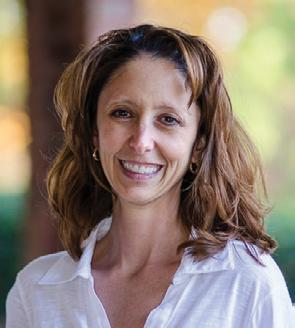

305 Page Road | Pinehurst, NC
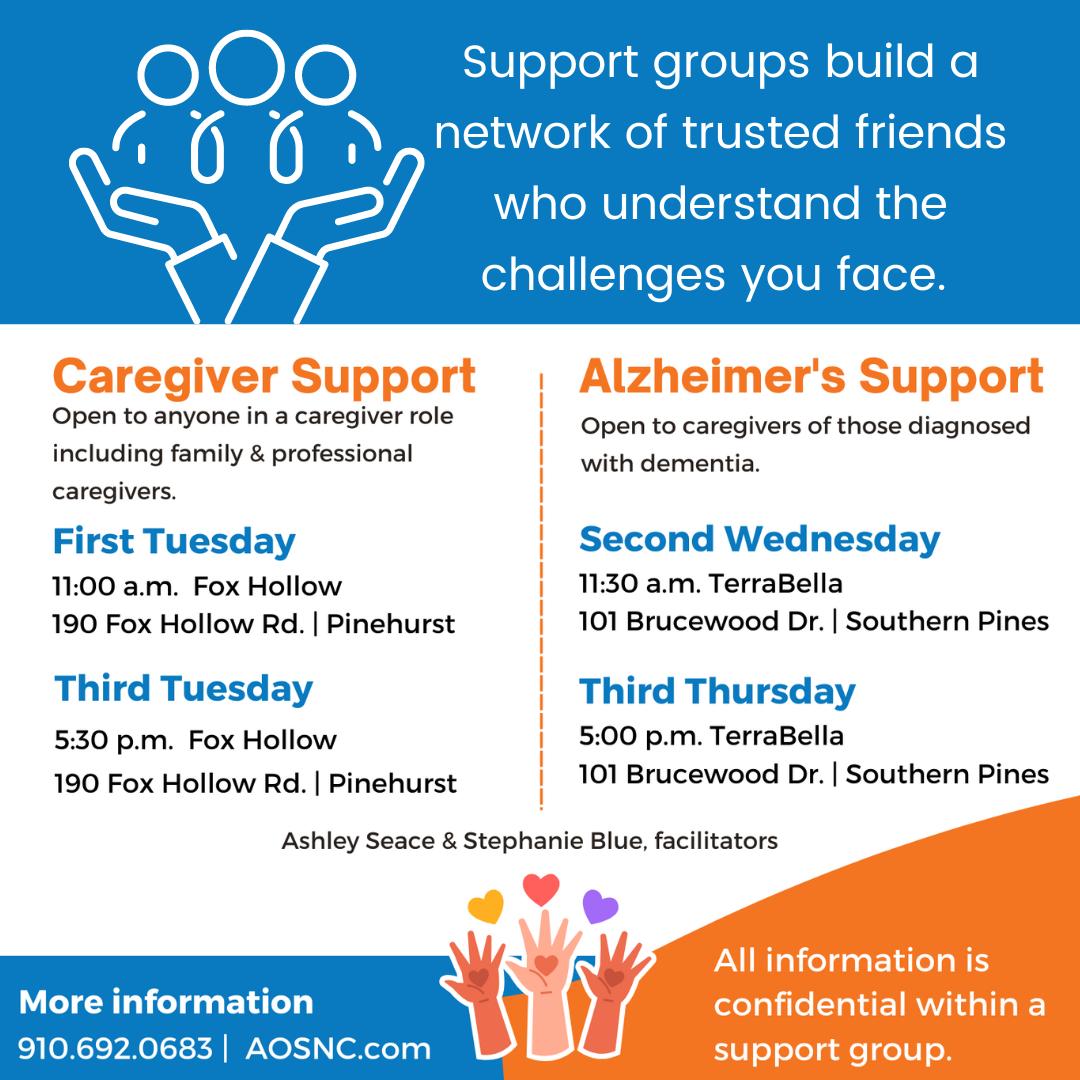
Support groups build a network of trusted friends who understand the challenges you face.
Fox Hollow. 190 Fox Hollow Rd | Pinehurst Caregiver
1st Tuesday | 11:00a.m.
Open to anyone in a caregiver role including family & professional caregivers.
Alzheimer’s
•
•
We are happily accepting new patients! Some
2nd Wednesday | 11:30a.m.
TerraBella. 101 Brucewood Rd | Southern Pines
Open to caregivers of those diagnosed with dementia
AOS Care Management Facilitators
910.692.0683
AOSNC.com
All information shared within a support group is confidential.


APRIL 2024 - 15
Eye Diseases are Hereditary
• 910.295.2100
Eye diseases like glaucoma and age-related macular degeneration can run in families. Don’t wait! Schedule an eye exam with your doctor today! CAROLINAEYE.COM
14 - APRIL 2023
Gray Matter Games Solutions
inquire,
kim.m.calabretta@t-mobile.com or visit relaync.com/rcc
Communication with Captions! Relay Conference Captioning WhatCan WE DoToHelp ? To learn more about the Personal Music Player and other AOS & Friends Care programs/services: 910.585 6757 info@aosfcare.org www.aosfcare.org www.facebook.com/AOSFriendsCare
YOU KNOW
us
Relay Conference Captioning (RCC) service is available for individuals who have a hearing loss or a speech disability to actively participate in teleconference calls or webinars by reading live captions on their laptop, mobile device or tablet. To
contact
Accessible
DO
SOMEONE WITH MEMORY IMPAIRMENT WHO COULD USE SOME FINANCIAL HELP? Grants of up $1,000 to income qualified eligible individuals for the following: Contact
NOW to request a Grant Application!
•Caregiver services
•Respite care
•Adult Day care tuition
agencies
•Identifying if benefits may be available from government
and
aids
•Equipment, devices,
therapeutic
•Placement assistance
Identifying
needs
care
Help coordinating or
care
obtaining
Make Every Day Five Star
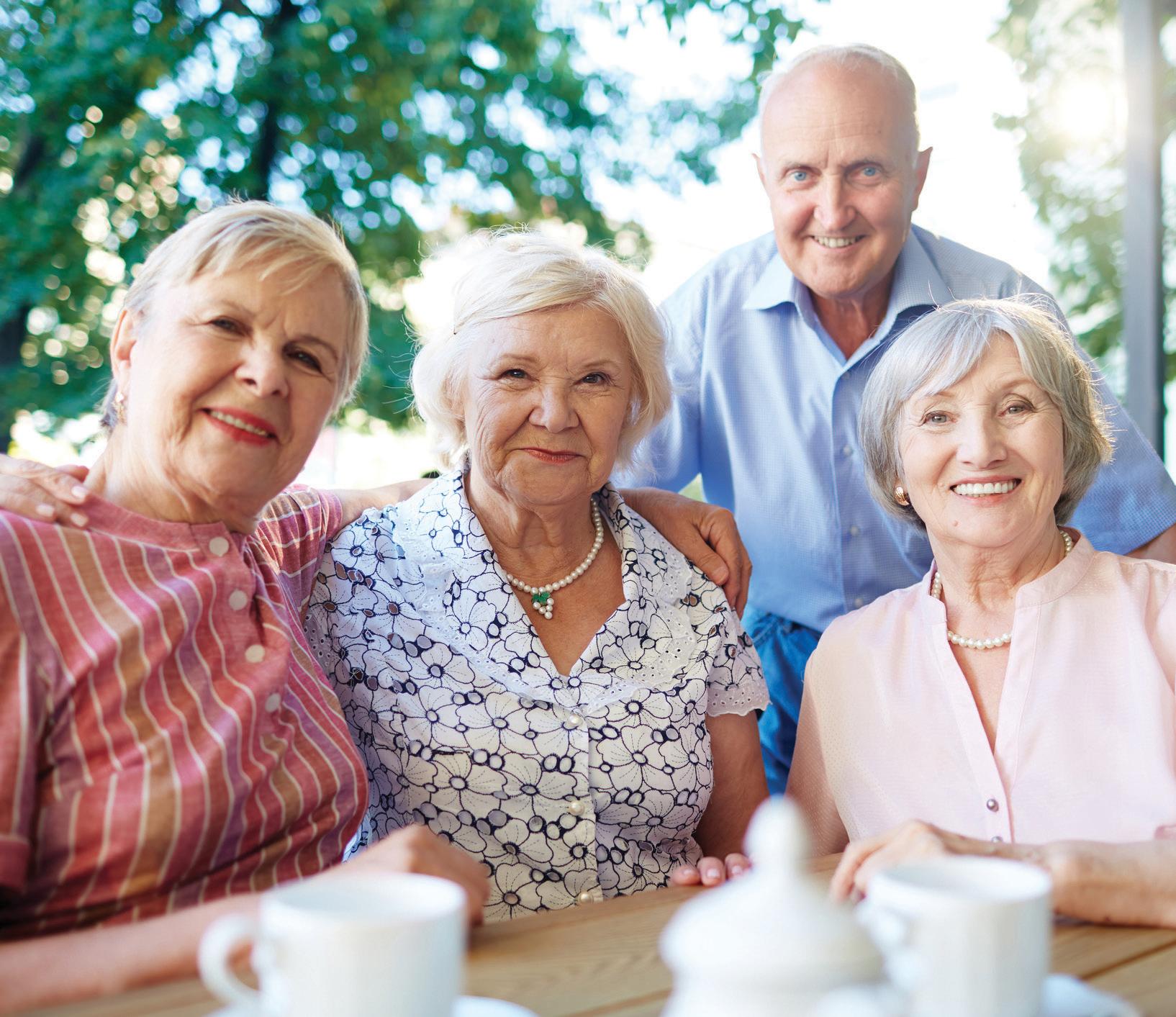
At Fox Hollow Senior Living, our residents have the opportunity to do everything they’ve always loved. With Five Star Dining, days filled with friends and adventures, you can be yourself again – while we take care of the rest.
FOX HOLLOW SENIOR LIVING COMMUNITY 190 Fox Hollow Road • Pinehurst, NC 28374
910-695-0011 • www.FoxHollowSeniorLiving.com
ASSISTED LIVING • MEMORY CARE
RESPITE/SHORT-TERM STAYS ©2021 Five Star Senior Living
Call to visit and explore our community.
16 - APRIL 2024 OCTOBER 2022 - 16











































